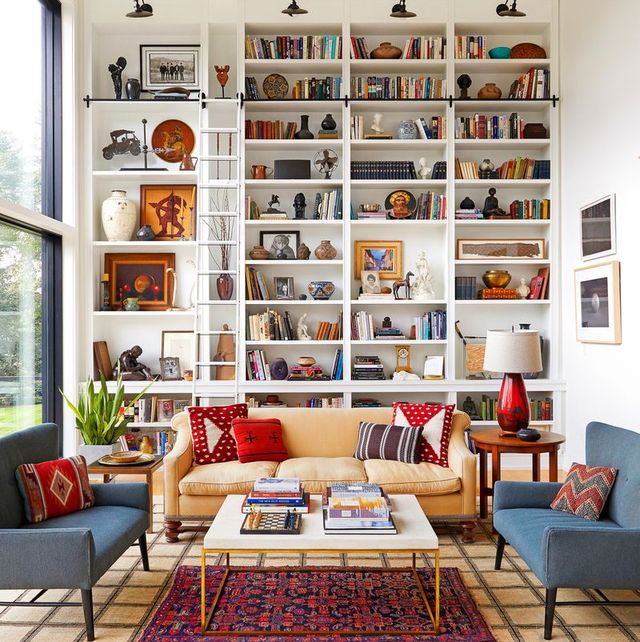Master the Art of Layering Textures in Home Style for a Cozy Ambience
The ability to properly layer structures within home decoration is a nuanced ability that dramatically adds to a warm and inviting environment. By understanding the interplay in between various products and their responsive qualities, one can develop a space that not just looks visually pleasing but additionally really feels inviting. The choice of corresponding appearances, from soft materials to natural environments, is critical in attaining this equilibrium - Home decor. Nonetheless, the challenge depends on grasping the strategies that raise a space from merely practical to remarkably comfortable. Checking out these techniques reveals how thoughtful layering can transform your living setting into a real refuge.

Understanding Appearance Fundamentals
When it comes to home design, understanding the fundamentals of appearance is important for creating an unified and welcoming room. Texture refers to the tactile quality of surface areas and can dramatically affect the total aesthetic and feeling of a space.

Choosing the Right Products
Choosing the right products is important in accomplishing a well-layered texture in home decoration. The option of products not just affects the total visual but also influences the convenience and performance of the room. When taking into consideration appearances, prioritize natural fibers such as cotton, silk, woollen, and bed linen, which use warmth and a tactile top quality that artificial materials frequently lack.
For furniture, choose resilient materials that can withstand wear while keeping their texture. Velvet and chenille can add glamorous deepness, while canvas and jeans provide a more laid-back feel. Integrating wood, metal, or stone can boost the responsive contrast, supplying a based, natural component to your style.
Devices like rugs and pillows can introduce diverse appearances and patterns, improving the overall split impact. Inevitably, the best material options will certainly harmonize with your style vision, producing a room that feels inviting and natural.
Layering Strategies for Depth
Reliable layering techniques are essential for producing deepness in home design, changing a level room into one that feels abundant and inviting. To achieve this, begin by incorporating numerous textures that contrast yet match each other.
Next, think about using carpets. Layering carpets can efficiently specify locations within a room, adding warmth and dimension. A bigger, neutral carpet can act as a base, while a smaller, patterned rug adds focal points. Likewise, tactically putting toss cushions with differing textures and sizes on sofas or beds can improve depth and comfort.
Additionally, include architectural aspects such as shelves or framed artwork to develop upright layers. This not just draws the eye upward but additionally supplies opportunities to present added appearances via attractive products displayed on the shelves.
Color Coordination and Structure
In the realm of home decor, attaining consistency in between color and appearance is essential for establishing a cohesive and welcoming environment. When thoughtfully worked with, color and texture can raise the aesthetic allure of an area, producing depth and passion.
:max_bytes(150000):strip_icc()/spanish-art-deco-home-tour-living-room-0120-2000-e206e51ef737424aaa6eab5f500f5b84.jpg)
Next, focus on structure. Soft fabrics like velvet or bed linen juxtaposed with tough materials such as timber or metal develop a dynamic interaction. A plush velour couch matched with a streamlined, metal coffee table presents a responsive comparison that invites touch and exploration.
Furthermore, layering different structures-- like a woven rug under a smooth table-- can better improve the room. Remember to preserve a natural look by restricting the number of shades and structures, which helps prevent aesthetic disorder. By mastering the art of shade coordination and structure, you can develop an environment that feels both harmonious and inviting.
Seasonal Texture Transitions
As the seasons modification, so as well ought to the textures within your home to show the evolving atmosphere and mood. Transitioning your decoration from one period to another can create a sense of freshness and convenience, enhancing your home's overall appeal.
In spring and summertime, welcome lighter textiles such as bed linen and cotton. These products advertise a windy feel and can be enhanced with vibrant patterns or subtle textures like embroidered details. Integrate airy throw pillows and lightweight blankets to preserve a sense of relaxation.
As fall approaches, take into consideration presenting warmth through richer appearances. Woollen, velvet, and heavier knits can offer comfort and comfort. Go with earthy tones and layered textiles website here like beefy knit throws or sumptuous velours to develop a welcoming atmosphere.
Winter months asks for a a lot more indulgent method. Integrate split structures with faux hair, thick woollen, and plush materials - Home decor. These elements not just add depth to your decor but additionally invite warmth throughout chillier months
Final Thought
Finally, mastering the art of layering appearances in home design substantially adds to developing a comfy atmosphere. By comprehending appearance basics, choosing proper products, using efficient layering strategies, and coordinating shades, a harmonious and welcoming room can be attained. Furthermore, adapting appearances seasonally enhances the overall visual and convenience of the home. This thoughtful technique not only improves the aesthetic charm yet also promotes an environment favorable to leisure and health.
The capability to properly layer appearances within home decoration is a nuanced ability that substantially adds to a cozy and inviting environment.When it comes to home style, understanding the basics of structure is vital for developing a harmonious and inviting area. By mastering the essentials of texture, you lay the groundwork for even more innovative layering techniques, leading to a well-curated and welcoming home design plan.
Picking the right materials is crucial in accomplishing a well-layered structure in home decoration.In verdict, mastering the art of layering structures in home decoration significantly contributes to creating a cozy environment.